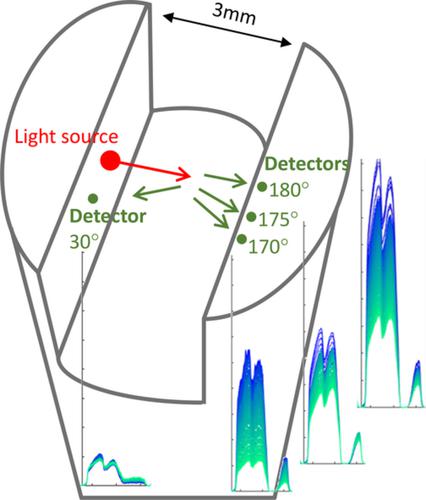当前位置:
X-MOL 学术
›
Polym. Eng. Sci.
›
论文详情
Our official English website, www.x-mol.net, welcomes your
feedback! (Note: you will need to create a separate account there.)
Monitoring of polymer content in an emulsion polymerization using spatially resolved spectroscopy in the near infrared region and Raman spectroscopy
Polymer Engineering and Science ( IF 3.2 ) Pub Date : 2020-07-16 , DOI: 10.1002/pen.25467 Manis Gheghiani 1 , Noémie Caillol 2 , Serge Henrot 2 , Timothy F. L. McKenna 3 , Nida Sheibat‐Othman 1
Polymer Engineering and Science ( IF 3.2 ) Pub Date : 2020-07-16 , DOI: 10.1002/pen.25467 Manis Gheghiani 1 , Noémie Caillol 2 , Serge Henrot 2 , Timothy F. L. McKenna 3 , Nida Sheibat‐Othman 1
Affiliation

|
The potential of spatially resolved spectroscopy (SRS) for in situ monitoring is evaluated in this work. SRS is based on near‐infrared spectroscopy. It is well adapted to heterogeneous systems and collects information about both physical and chemical properties. In this work, the polymer content in emulsion copolymerization is predicted using SRS. The reaction was first carried out in batch mode for particle nucleation followed by semi‐continuous monomer addition under starved conditions to allow particle growth. SRS and Raman spectroscopy are compared, and the advantages and disadvantages of both methods are highlighted, revealing that each method has its own benefits. Different operating conditions were varied, including the monomer ratio, the surfactant mass fraction, and the agitation speed. Regression models were developed using partial least square for both techniques.
中文翻译:

使用近红外区域的空间分辨光谱和拉曼光谱监测乳液聚合中的聚合物含量
空间分辨光谱(SRS)在原位的潜力在这项工作中评估了监视。SRS基于近红外光谱。它非常适合异构系统,并收集有关物理和化学性质的信息。在这项工作中,使用SRS可以预测乳液共聚中的聚合物含量。该反应首先以间歇模式进行以进行颗粒成核,然后在饥饿的条件下半连续添加单体以使颗粒生长。比较了SRS和拉曼光谱,突出了这两种方法的优缺点,表明每种方法都有其各自的优点。改变不同的操作条件,包括单体比例,表面活性剂质量分数和搅拌速度。两种技术都使用偏最小二乘建立了回归模型。
更新日期:2020-09-16
中文翻译:

使用近红外区域的空间分辨光谱和拉曼光谱监测乳液聚合中的聚合物含量
空间分辨光谱(SRS)在原位的潜力在这项工作中评估了监视。SRS基于近红外光谱。它非常适合异构系统,并收集有关物理和化学性质的信息。在这项工作中,使用SRS可以预测乳液共聚中的聚合物含量。该反应首先以间歇模式进行以进行颗粒成核,然后在饥饿的条件下半连续添加单体以使颗粒生长。比较了SRS和拉曼光谱,突出了这两种方法的优缺点,表明每种方法都有其各自的优点。改变不同的操作条件,包括单体比例,表面活性剂质量分数和搅拌速度。两种技术都使用偏最小二乘建立了回归模型。











































 京公网安备 11010802027423号
京公网安备 11010802027423号